value of college
Data analysis comparing cost-effectiveness of a college education using College Scorecard data
As part of our course Data Science and Big Data with Raja Sooriamurthi, my partner and I performed an analysis of the value of a college education. Key takeaways (and a brief video presentation by Shikha) are below, or you can view the full report on Github.
Background
As students at Carnegie Mellon University–a high-cost institution–we wanted to know if our future earnings potential is worth the trouble to get into an expensive, elite university like ours. Using the College Scorecard data from the U.S. Department of Education, we explored the question: Is college (specifically CMU) worth the expense?
A preliminary exploration showed a trend of high tuition fees corresponding with high post-graduation earnings. Additionally, earnings seem to show a negative correlation with the percentage of Pell grant recipients at a school, which is a proxy for the number of low-income students at a school.

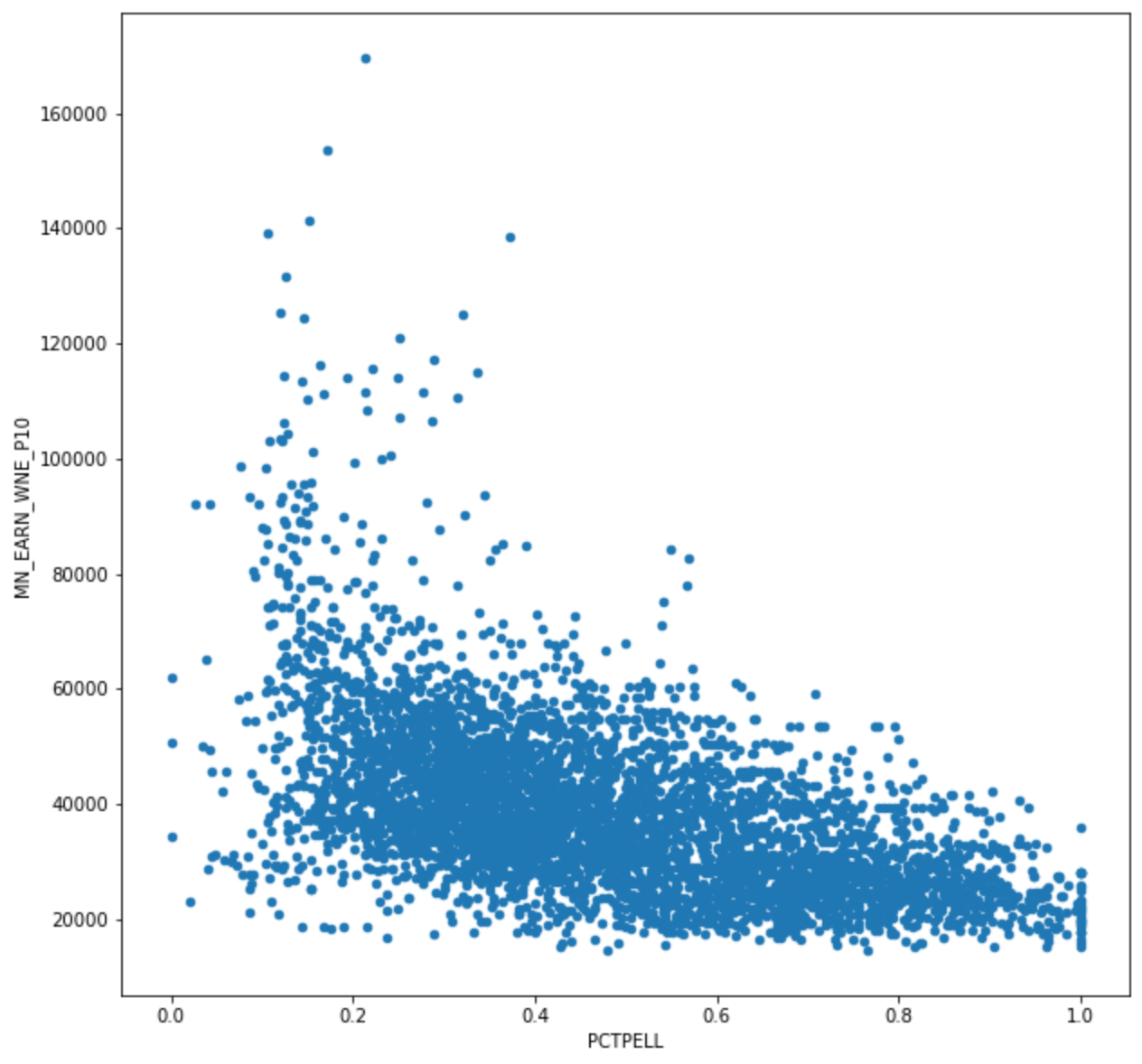
To dig into this question further, we viewed it through the lens of a typical student’s college journey, which generally comprises 4 parts:
- Admissions
- Tuition
- Debt
- Earnings
Fortunately the College Scorecard dataset has an abundance of data on all of these areas, covering a span of more than two decades. Takeaways for each of these questions follow.
1. Admissions
When comparing admissions data with other schools and earnings, a few points become obvious:
- CMU is much more selective than the average school
- CMU is less selective than many other elite schools
- Top schools have become more selective over time
- Higher earning colleges tend to be more selective
Especially noteworthy is that CMU manages to obtain some of the highest earnings outcomes as well as an admission rate that is double or even triple some other elite colleges. (I would like to see this scaled by number of applicants and overall school capacity; a very high admission rate is not that impressive if no one applies to your school.)
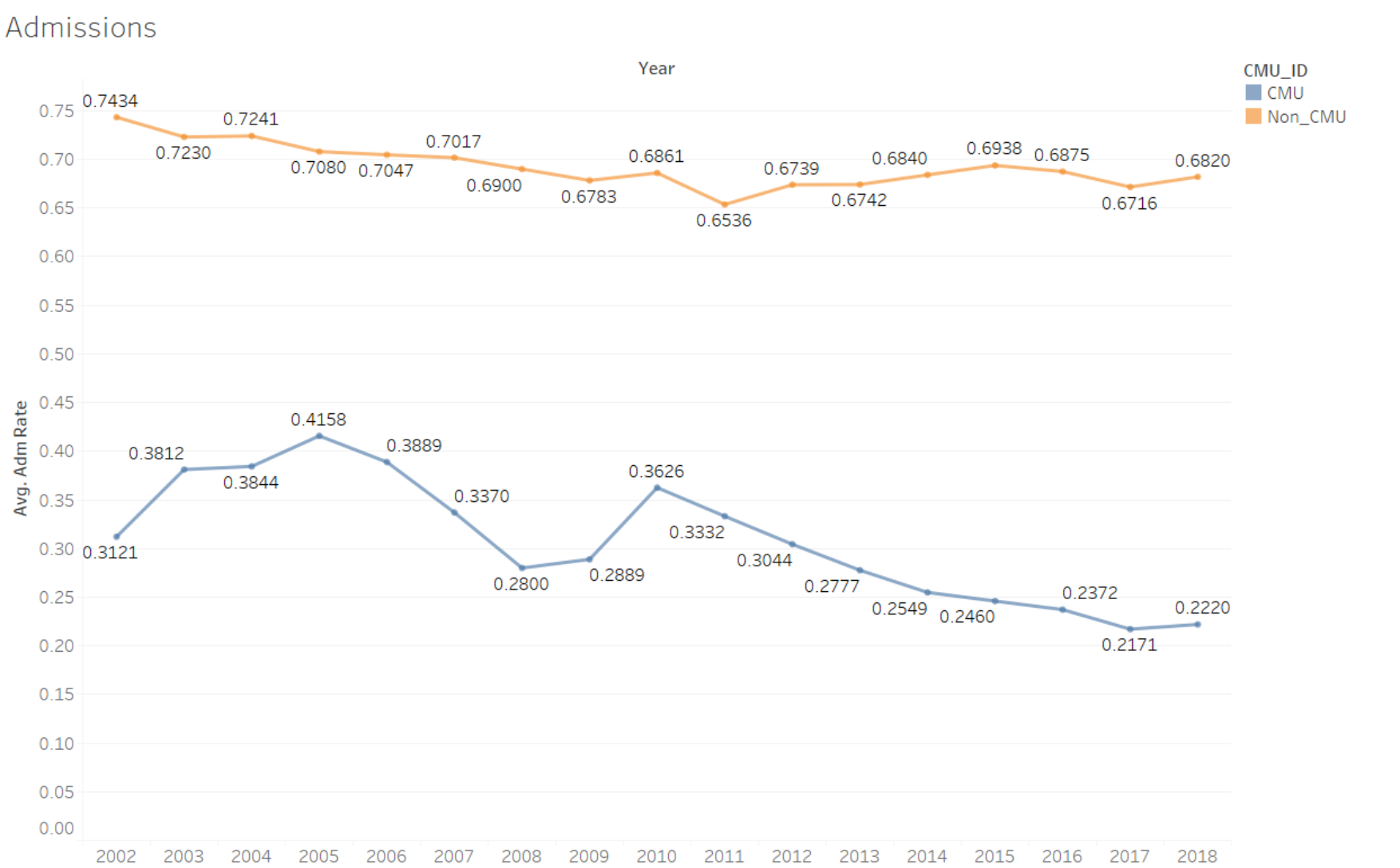
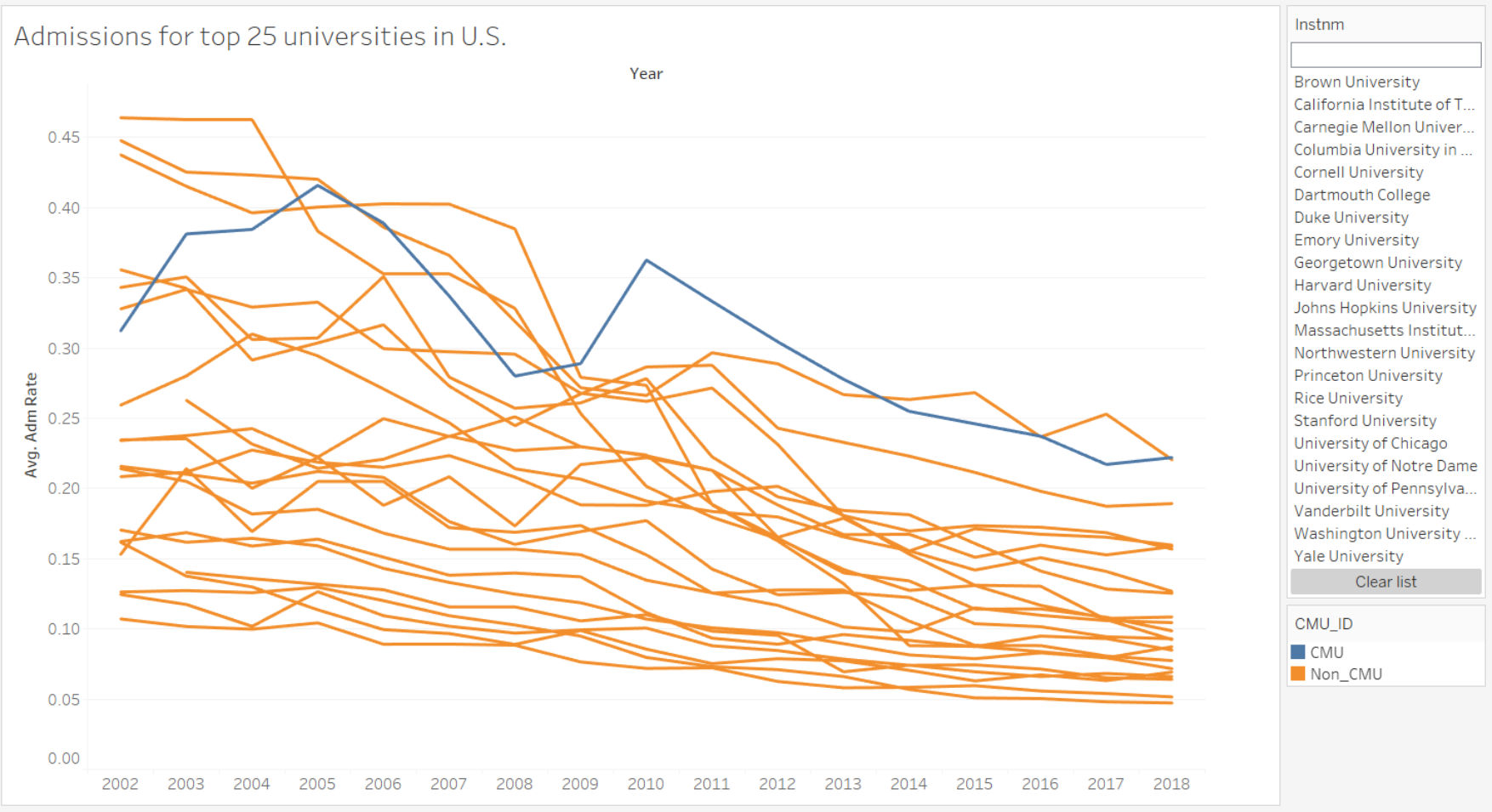
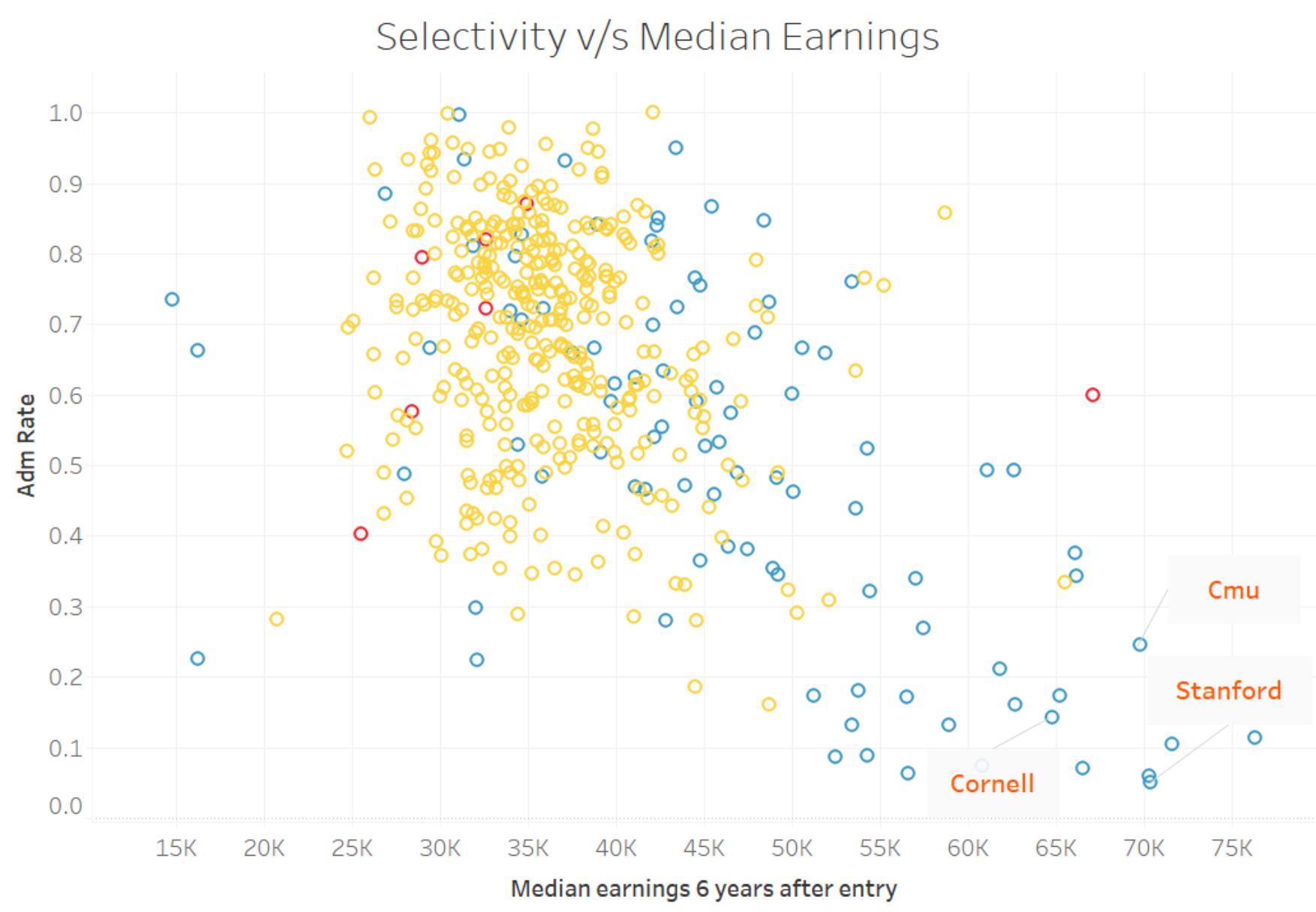
2. Tuition
Here we find some more interesting numbers:
- CMU has not only been one of the more expensive schools to attend, but its tuition fees have gone up much faster than most other schools (especially public schools).
- Despite the increase in tuition, average family income for a student has more or less kept pace.
- Colleges with higher earnings tend to be more expensive; there are obviously a lot of other factors here, since the ability to afford an expensive school likely indicates other privileges that would translate to higher earnings as well.
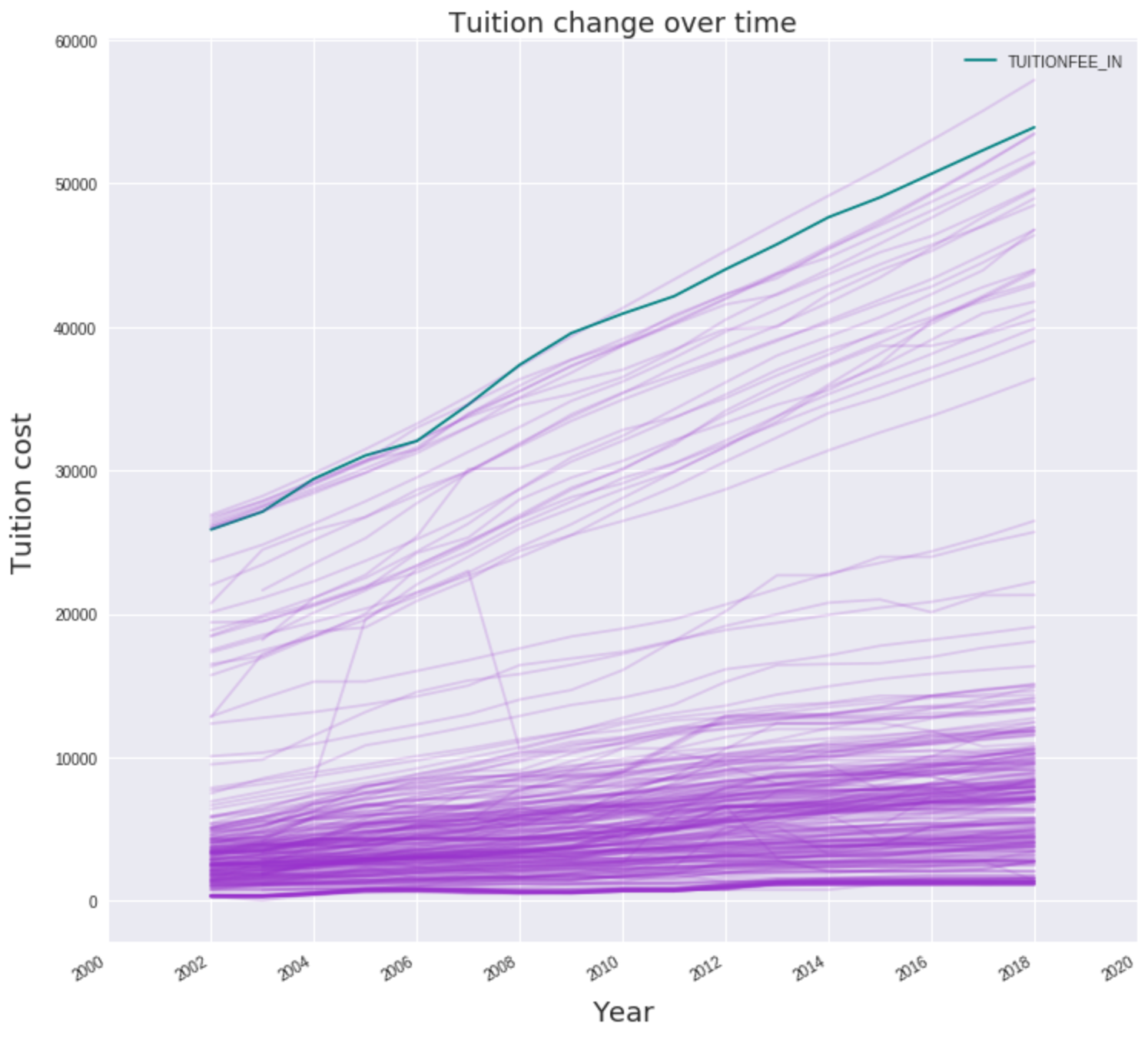
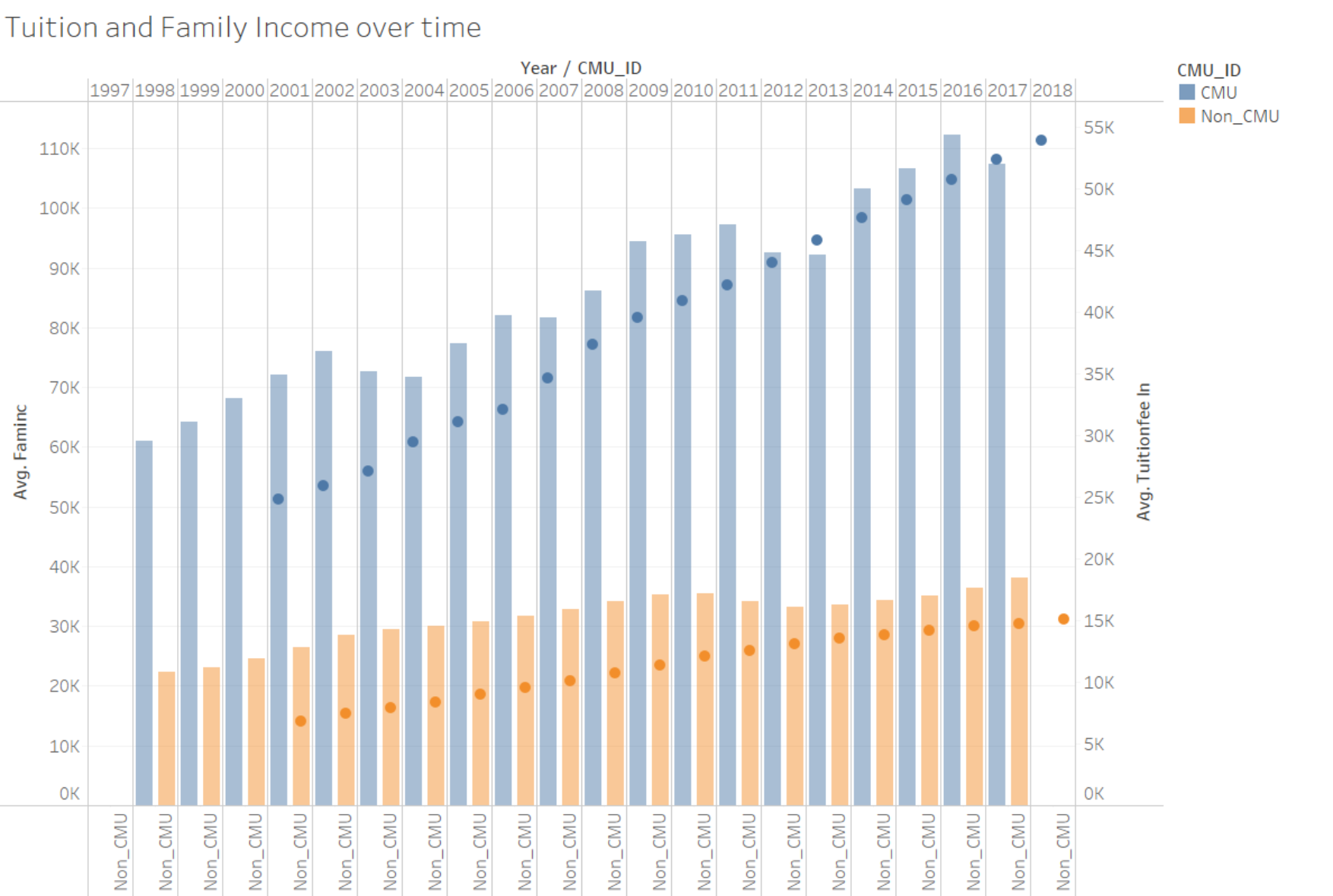
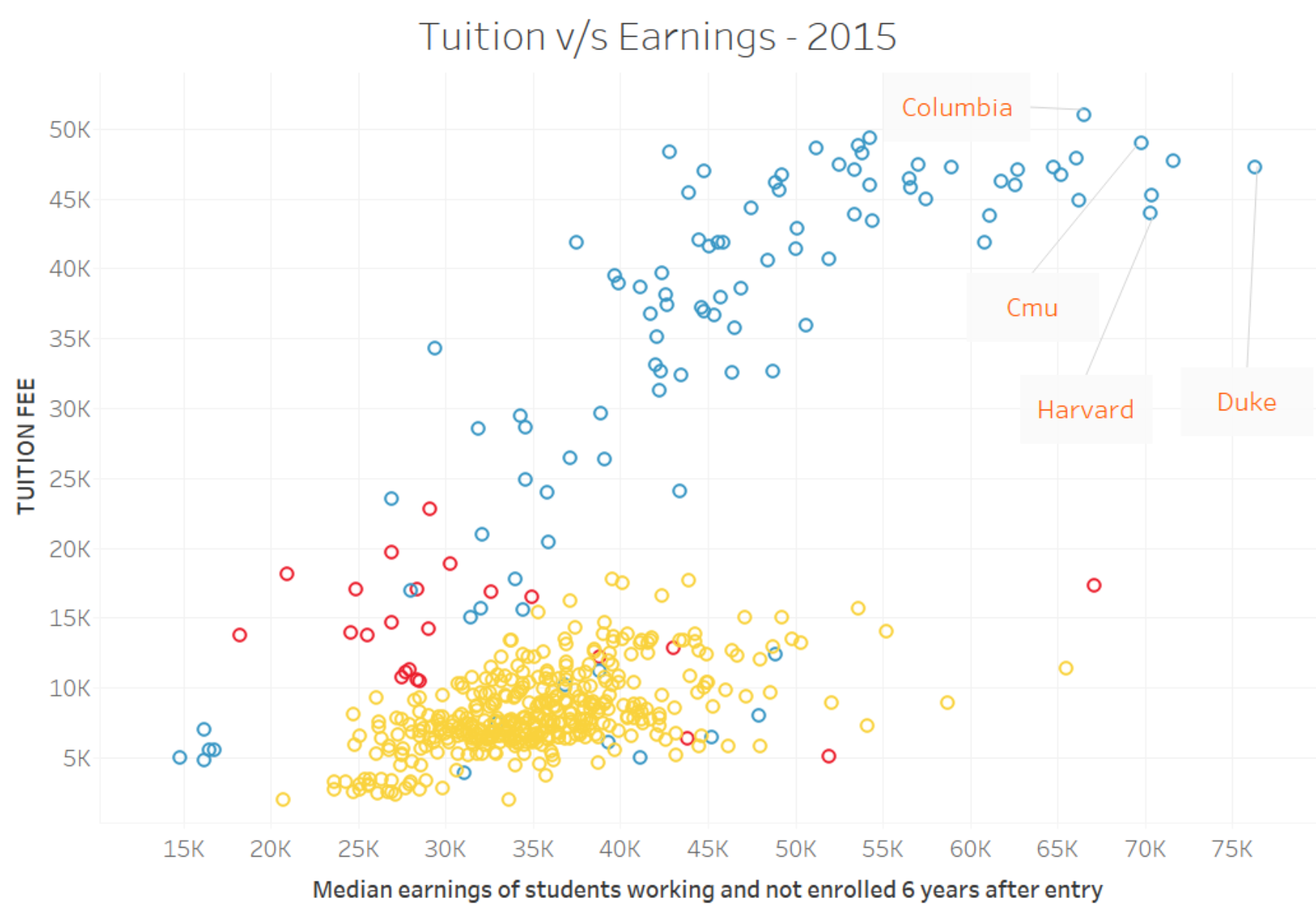
3. Debt
The story here is common knowledge: student debt on average has doubled in the last 20 years, with default rates spiking in the years after the Great Recession. CMU student debt is especially high, although loan default rates were apparently unaffected. This could be thanks to high family income (support from home) and also the high earnings for CMU grads enabling those students to pay off their debt.
The most notable insight here was the discrepancy between CMU and other top universities when it comes to borrowing rates and median family income:
- CMU had very high borrowing rates compared to other top schools
- CMU had very high median family income compared to many other top schools

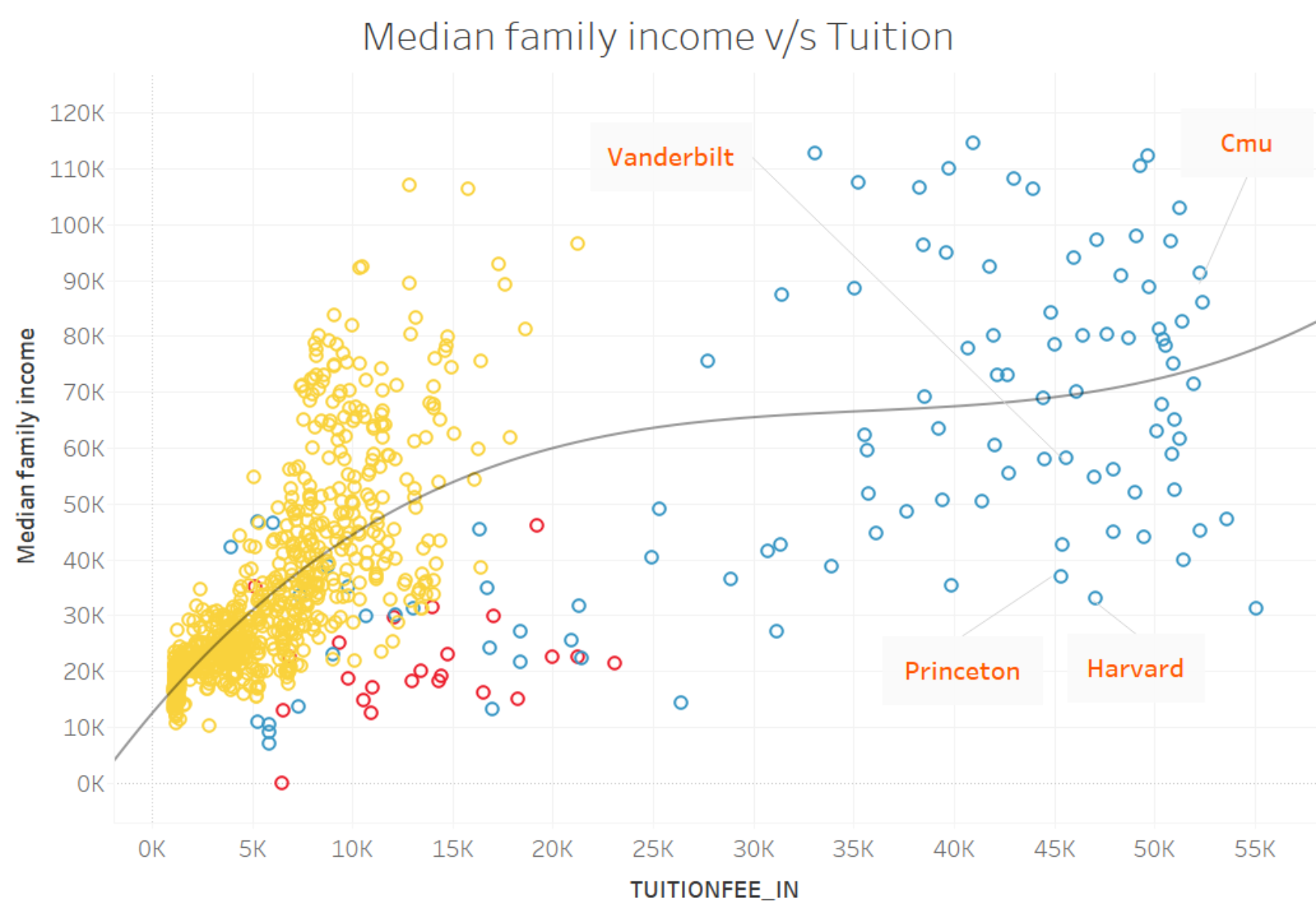
This was surprising, since we had supposed that perhaps Ivy League colleges were simply attended by wealthier students who could afford not to take a federal loan. But the family income data disputed this theory, instead indicating that CMU is not nearly as accessible to low-income students as other top schools. What would explain this difference?
4. Earnings
Finally we can look at earnings over time for CMU graduates. Here we see clearly what has been indicated already in previous sections: CMU has much higher earnings outcomes than average, and it looks set to continue that way.
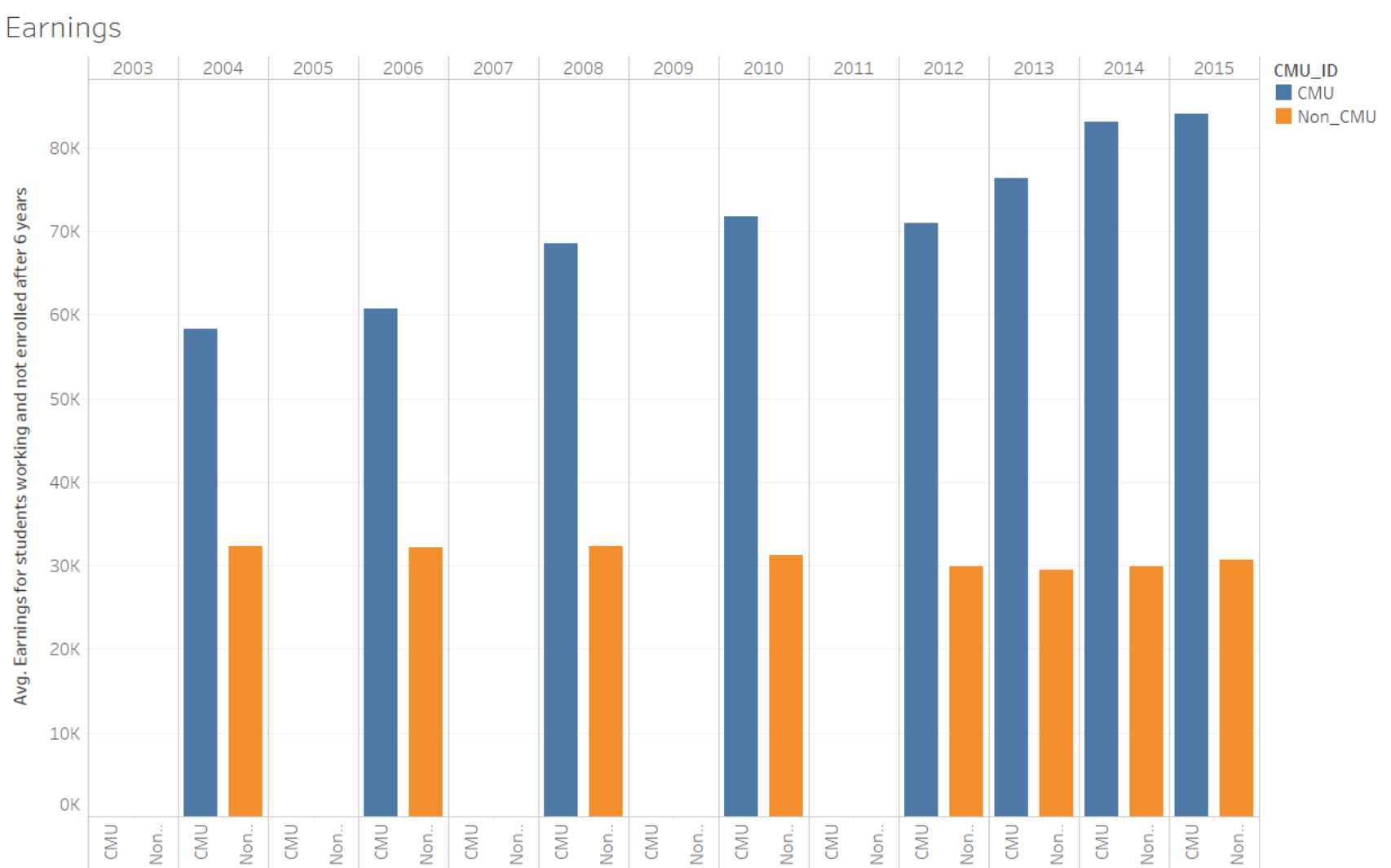
Findings
Our original question was: Will we get a return on our investment for coming to CMU?
The answer seems clear:
- CMU rewards its graduates with much higher earnings than average, seemingly enough to compensate for the very high tuition and debt that comes with it.
- CMU has relatively high admissions rates compared to many other top schools.
Access to low-income students does not look so excellent for CMU:
- Compared with other elite schools, CMU tends to attract students with higher family incomes (possibly because of the next point).
- Compared with other elite schools, CMU seems to be lagging in two areas:
- Providing financial aid to students generally
- Being accessible to low-income students and populations
This analysis should be useful to anyone interested in attending CMU, their parents, administrators, and anyone concerned with the quality and value of CMU’s education. In particular, we hope it will respond to the concerns of our primary audience: current or former students who have wondered if their sacrifice was worth it. We hope we have reassured you that, in fact, it was.
